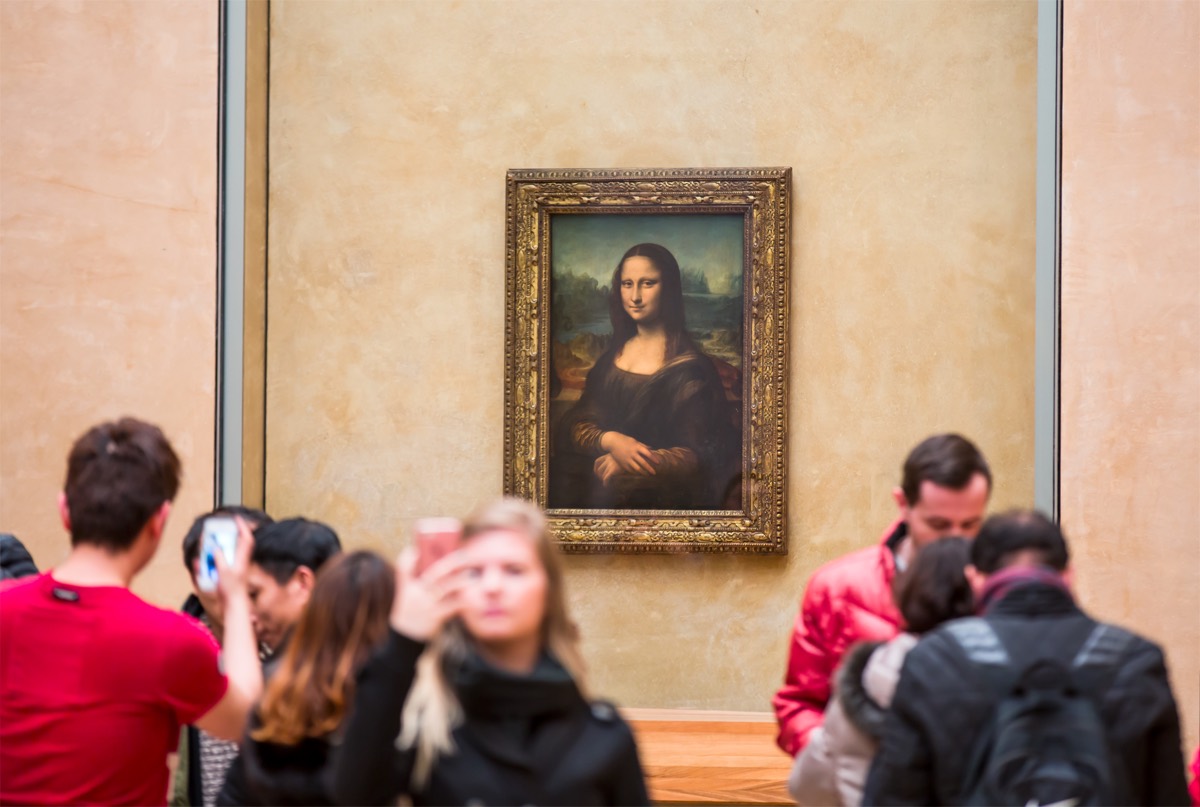The Magical Gaze of 'Mona Lisa' Is a Myth
But this common knowledge, it turns out, is wrong. The eyes of the woman in the "Mona Lisa" don't follow viewers.
A new study finds that the woman in the famed painting is actually looking out at an angle that's 15.4 degrees off to the observer's right — well outside of the range that people normally perceive when they think someone is looking right at them. In other words, said study author Gernot Horstmann, a perceptual psychologist at Bielefeld University in Germany, "She's not looking at you." [In Photos: Leonardo Da Vinci's 'Mona Lisa']
The misnamed "Mona Lisa effect"
This is somewhat ironic, because the entire phenomenon of a person's gaze in a photograph or painting seeming to follow the viewer is called the "Mona Lisa effect." That effect is absolutely real, Horstmann said. If a person is illustrated or photographed looking straight ahead, even people viewing the portrait from an angle will feel they are being looked at. As long as the angle of the person's gaze is no more than about 5 degrees off to either side, the Mona Lisa effect occurs.

This is important for human interaction with on-screen characters. If you want someone off to the right side of a room to feel that a person on-screen is looking at him or her, Horstmann said, you don't cut the gaze of the character to that side — surprisingly, doing so would make an observer feel like the character isn't looking at anyone in the room at all. Instead, you keep the gaze straight ahead.
Horstmann and his co-author, computer scientist Sebastian Loth, also of Bielefeld University, were studying this effect for its applications in the creation of artificial-intelligence avatars when Horstmann took a long look at the "Mona Lisa" and realized something.
"I thought, 'Wait, she's not looking at me,'" he said.
To make sure it wasn't just him, the researchers asked 24 people to view images of the "Mona Lisa" on a computer screen. They set a ruler between the viewer and the screen and asked the participants to note which number on the ruler intersected the Mona Lisa's gaze. [Leonardo Da Vinci's 10 Best Ideas]
Sign up for the Live Science daily newsletter now
Get the world’s most fascinating discoveries delivered straight to your inbox.
To test whether the painting's other features made any difference in the way her gaze was perceived by the observer, the researchers altered the zoom on the image, changing whether the woman's eyes and nose or entire head were visible. To calculate the angle of Mona Lisa's gaze as she looked at the viewer, they moved the ruler farther from or closer to the screen partway through the study. This provided them with two points to work with, making it possible to calculate the angle.
Rightward gaze
Consistently, the researchers found, participants judged that the woman in the "Mona Lisa" portrait was not looking straight at them, but slightly off to their right.
"Mona Lisa's degree angle is clearly outside that range where you normally feel like you are being looked at," Horstmann said.
So why do people repeat the belief that her eyes seem to follow the viewer? Horstmann isn't sure. It's possible, he said, that people have the desire to be looked at, so they think the woman is looking straight at them, even when she's not. Or maybe, he said, the people who first coined the term "Mona Lisa effect" just thought it was a cool name.
The researchers reported their findings Jan. 7 in the open-access journal i-Perception.
- The Louvre Museum: Facts, Paintings & Tickets
- Gallery: Hidden Gems in Renaissance Art
- Lurking Beneath the 'Mona Lisa' May Be the Real One
Originally published on Live Science.

Stephanie Pappas is a contributing writer for Live Science, covering topics ranging from geoscience to archaeology to the human brain and behavior. She was previously a senior writer for Live Science but is now a freelancer based in Denver, Colorado, and regularly contributes to Scientific American and The Monitor, the monthly magazine of the American Psychological Association. Stephanie received a bachelor's degree in psychology from the University of South Carolina and a graduate certificate in science communication from the University of California, Santa Cruz.









